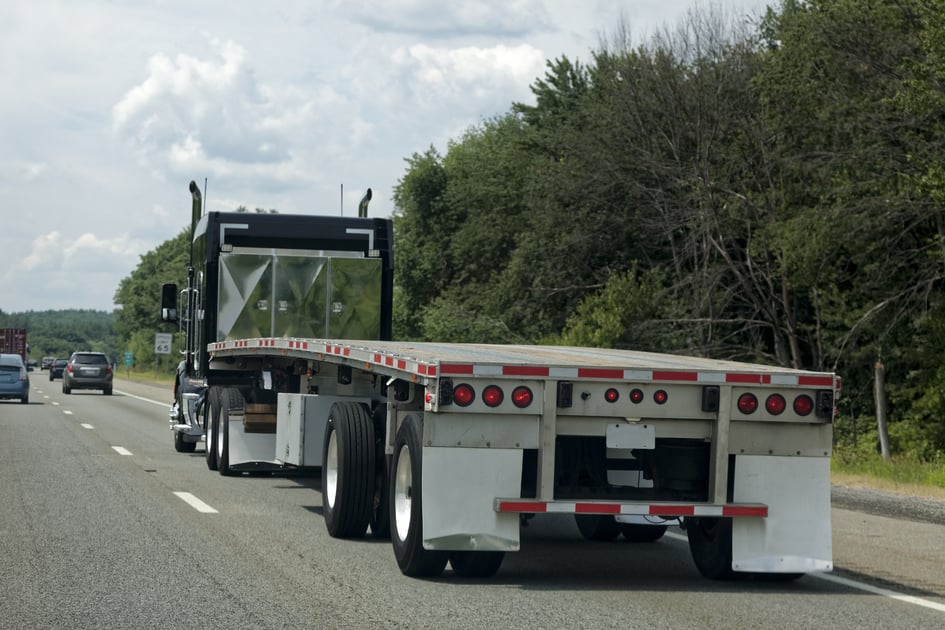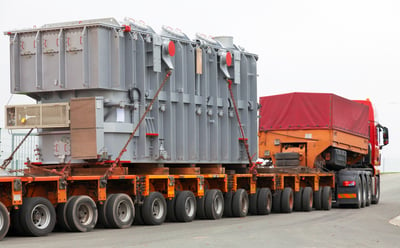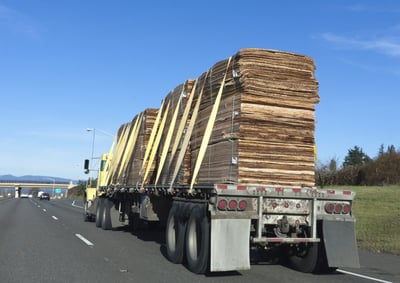
 The logistics of transporting heavy machinery and other cargo are always complex. For starters, the act of moving a piece of heavy equipment, such as a CNC machine, out of its current space is a complex feat of physics and planning. From there, the machine must be loaded onto the first mile carrier, potentially moved to a ship or cargo plane, and finally transported to its end location where it must be unloaded and set up.
The logistics of transporting heavy machinery and other cargo are always complex. For starters, the act of moving a piece of heavy equipment, such as a CNC machine, out of its current space is a complex feat of physics and planning. From there, the machine must be loaded onto the first mile carrier, potentially moved to a ship or cargo plane, and finally transported to its end location where it must be unloaded and set up.
One key aspect of this journey is securing the cargo as it’s in transit. Properly securing cargo is critical for a number of reasons:
- The safety of drivers and others on the road
- Protecting equipment from damage
- Ensuring that equipment or parts aren’t lost
- Complying with laws and regulations
- Preventing theft
Aside from the financial burden of equipment that’s lost, stolen or damaged, improperly secured cargo can result in fines and litigation as well. The cost of not going to great lengths to properly secure equipment in transit is simply too high to ignore.
Methods of Securing Cargo
 Cargo can be secured in a number of ways, each of which have different uses and applications. These include:
Cargo can be secured in a number of ways, each of which have different uses and applications. These include:
Blocking
Using equipment like chocks (for wheeled equipment), wedges, walls, dunnage and dunnage bags, blocking methods are designed to fill empty space in order to prevent the movement of equipment.
Lashings and tie-downs
These methods use tension to secure equipment in place. Lashings and tie-downs are generally situated to apply tension in the direction of the surface to which the equipment is secured, which may be a wall as well as a cargo bed or floor. Types of lashings and tie-downs include webbed material, chains, straps, ropes and cords.
Considerations for Securing Cargo
There are several factors to consider in securing your cargo, which can impact the methods you choose and the tactics you use. These include:
Will the method damage your equipment?
Some types of tie-downs, such as chains, may damage certain types of equipment or may damage components if applied in the wrong place. Consider how the material of the tie-down will interact with the surface with which it comes into contact. Consider as well whether a scuff or small dent would make a difference to you or the recipient.
You should also be conscious of where the tie-down contacts parts like levers or other protruding components that might easily break under tension or movement. In addition to damaging the machinery, this may compromise the integrity of the securement method.
Does the method address all potential ways the load may move?
For example, is wheeled equipment held in place with chocks or wedges in addition to other tie-downs or other methods? The lateral motion that may be introduced from wheeled equipment can cause a machine to slip from under a tie-down, no matter how much tension is applied — even on the shortest journeys. Minimize your risk by addressing any and all potential scenarios.
Is the method in compliance with transportation regulations?
 Regulations from the U.S. Department of Transportation and other agencies provide for proper cargo securement methods — and complying will not only mean that you’re following identified securement best practices, it can also prevent you from incurring fines. Some of these regulations include:
Regulations from the U.S. Department of Transportation and other agencies provide for proper cargo securement methods — and complying will not only mean that you’re following identified securement best practices, it can also prevent you from incurring fines. Some of these regulations include:
- Handling acceleration and deceleration forces as well as lateral forces like turning.
- Tie-down regulations: In general, they require one tie-down for pieces less than 5 feet long, two tie-downs for pieces between 5 and 10 feet (or less than 5 feet and more than 1,100 pounds) and one tie-down per 10 feet for pieces greater than 10 feet in length.
Will it deter or impede potential thieves?
Cargo theft is a lucrative business, and you may be surprised how quickly equipment can disappear (even a 15,000-pound machine). Aside from machine theft, the potential to strip parts, materials or components also can attract thieves. Your securement method should not only be difficult and time-consuming for a thief to overcome, it should also present a deterrence to attempting to steal individual parts off of a machine.
By considering all of these points, you’ll be well on the road to safe, secure and efficient cargo transportation.
If you're ready to take the next step, at InTek Freight & Logistics, we can help. Just tell us what you need and we'll discuss how our expertise can help with the unique shipping challenges your business faces. Rather do a bit more research first? View our Freight Guides for comprehensive articles and eBooks on all things freight and logistics.Get Updates
Featured Articles
Categories
- Freight & Shipping Costs (52)
- Freight Broker (58)
- Freight Forwarder (2)
- Intermodal Transportation (180)
- International & Cross Border Logistics (43)
- Logistics & Supply Chain (413)
- Logistics Service Provider (76)
- LTL (39)
- Managed TMS (49)
- News (38)
- Supply Chain Sustainability (12)
- Transportation Management System (37)
- Truckload (120)
- Warehousing & Distribution (49)



